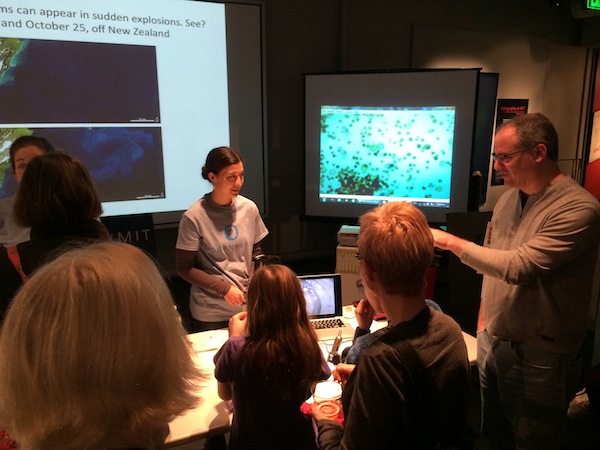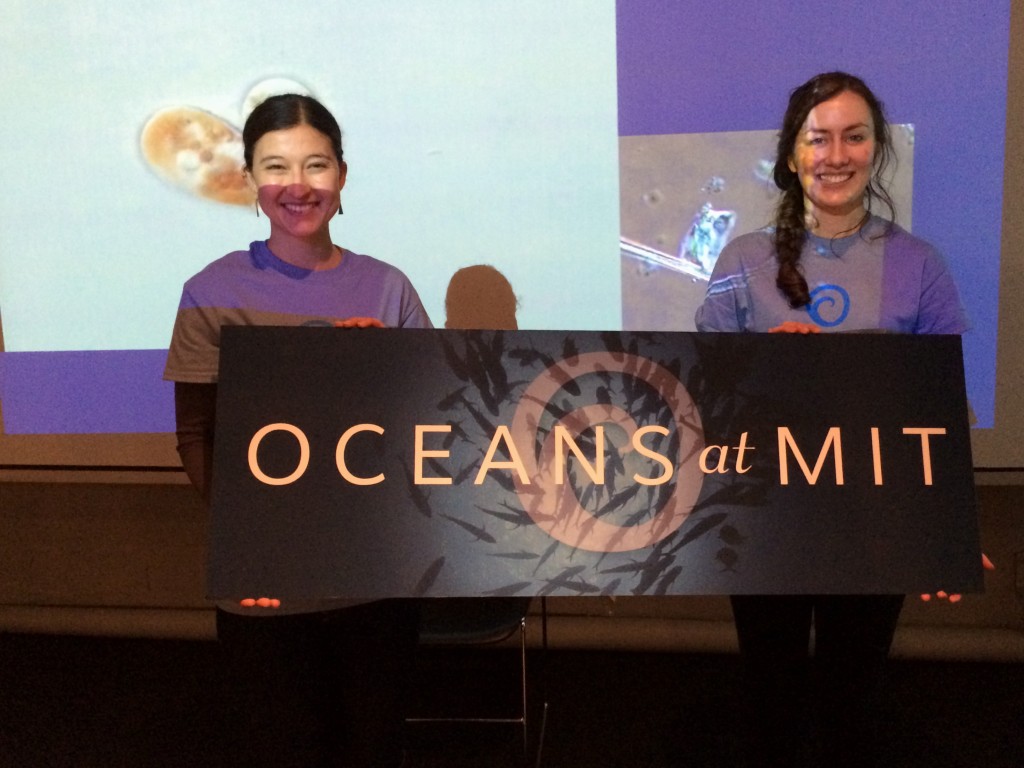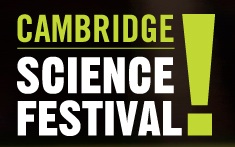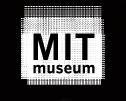Featured Stories | May 5, 2014
Spring is the Season of Outreach!
By Genevieve Wanucha
For Oceans at MIT, spring is the season for science outreach. This year, our team included a group of graduate students, post docs, faculty, and the science writer from MIT’s Program in Oceans, Atmospheres, and Climate (PAOC) within the Department of Earth, Atmospheric, and Planetary Sciences. We recently dazzled onlookers with a new live phytoplankton display at two annual public events held at the MIT Museum in April, namely Nautical Night and one day of the 2014 Cambridge Science Festival. Our display was a glimpse of the little microscopic organisms that make up the marine food web.

MIT post doc Darcy Taniguchi ran the microscope show, placing a Petri Dish of Charles River Water collected that morning under a compound light microscope. With the help of a digital camera, we projected the magnified view of the water up onto a white screen. Another laptop screen showed a magnified view of living aquatic crustaceans called copepods, which form the link in the food chain between phytoplankton and whales and fish.
Darcy Taniguchi, a biological oceanographer who recently came to MIT to work with Mick Follows after a postdoc year at Scripps Institution of Oceanography, studies the population dynamics of the marine food web, with a particular focus on phytoplankton and microzooplankton. She uses a mix of theoretical modeling studies, laboratory experiments, and field work to examine how the size of plankton affect their interactions in the ocean. At Nautical Night and CSF, she was the go-to expert about the important role of plankton in our planet’s food web and climate.
It’s pretty cool to watch the bustling marine life in the small amount of water. Here, see copepods zoom through the colonies of phytoplankton cells, eating a few of the tiny plants in the process. Here’s video taken from the screen:
We handed out Oceans at MIT T-shirts and feature stories on marine ecology research at MIT and WHOI. Beautiful satellite shots of phytoplankton blooms scrolled in the background, along with lab videos of a variety of interesting planktons collated by biogeochemical modeler Mick Follows, Associate Professor in EAPS and leader of the MIT Darwin Project. One of the highlights of entire experience came when Follows shared facts about bizarre ocean organisms, such as the cyanobacteria Trichodesmium, which form colonies of straw-like filaments to collect iron-contain dust particles, and dinoflagellates that both photosynthesize like a plant and eat prey like an animal. Read Follows’ profile on Oceans at MIT.

This was Oceans at MIT’s second time participating in Nautical Night, one of the Second Friday educational programs at MIT Museum at which members of the general public can try their hands at both traditional and modern shipbuilding techniques, and get a firsthand look at objects from the MIT Museum’s Hart Nautical Collection, MIT Foundry and Forge, MIT Sea Perch.
And, we were thrilled to take part again in the Cambridge Science Festival, a celebration showcasing the leading edge in science, technology, engineering and math in our region. CSF offers a wide range of lectures, debates, exhibitions, concerts, plays, and workshops over ten days at many locations. This year, 689 people passed by Oceans at MIT’s presentation at MIT Museum 2014 CSF location–close to the largest volume for single day at Museum over this year’s entire festival.
See all the Photos from Oceans at MIT’s April outreach on PAOC’s Flickr! Stay up to date with Oceans at MIT on Facebook and our Twitter feed at MIT_Oceans.







